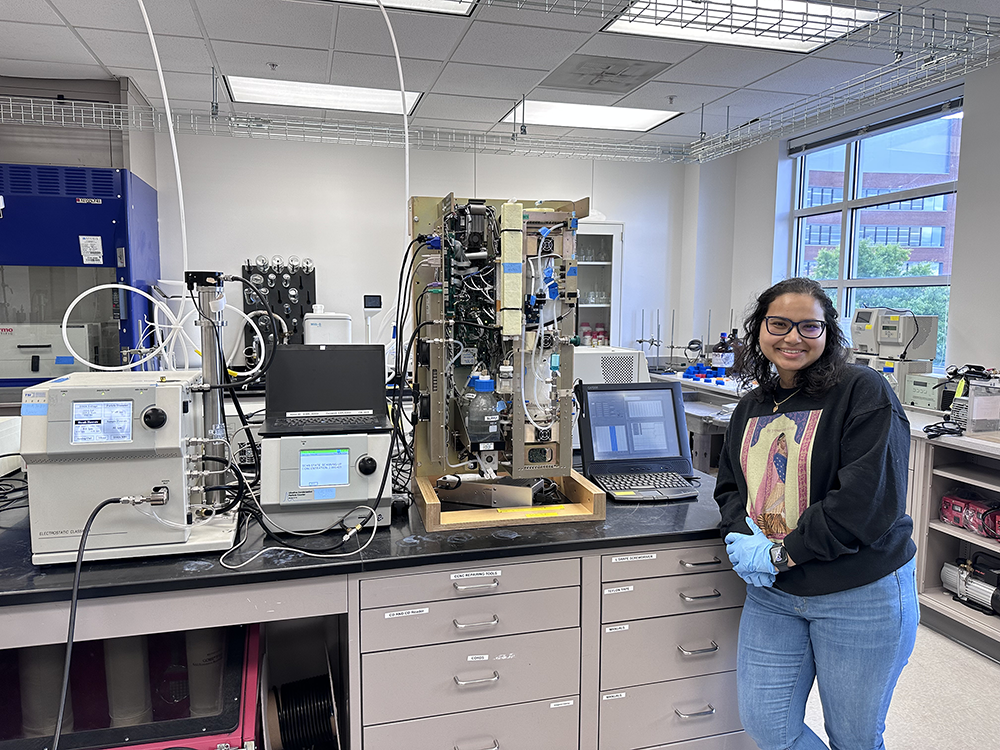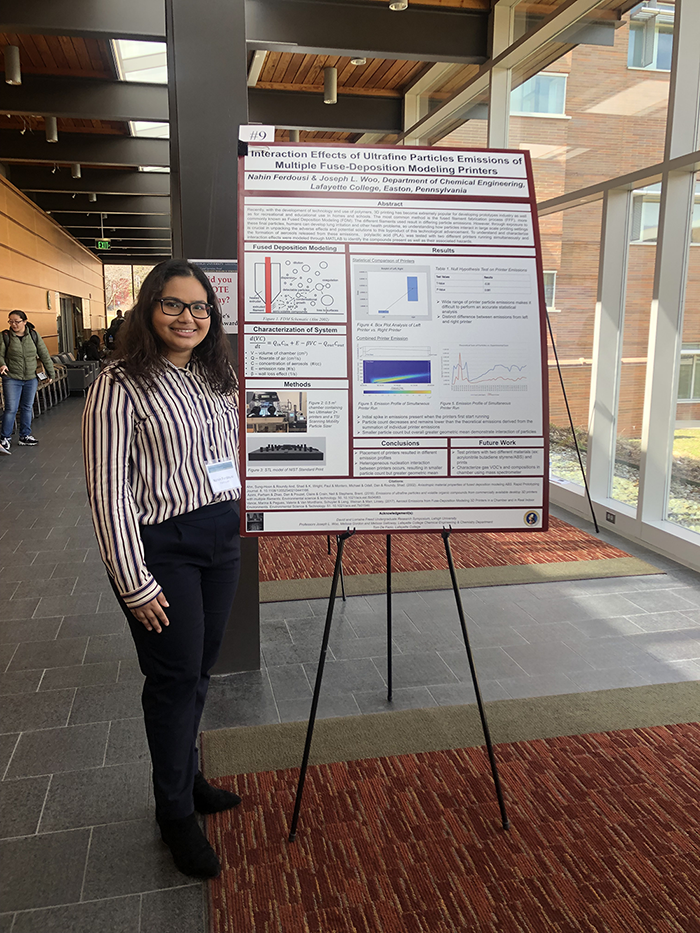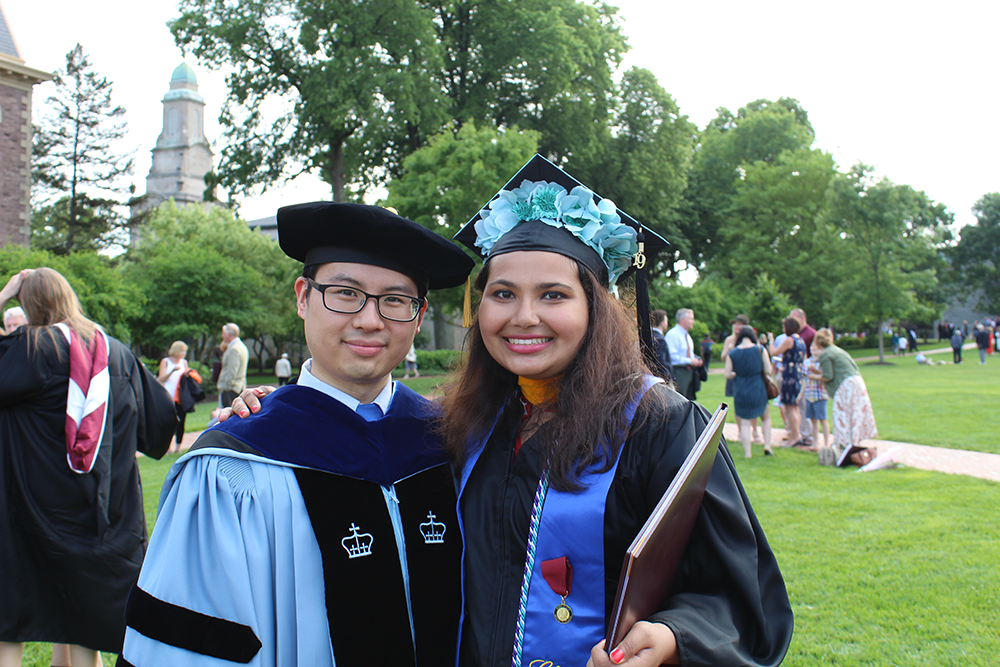DOE graduate student program gives early career scientist opportunity to translate aerosol observations into models

Growing up in Queens, the New York City borough across the East River from Manhattan, Nahin Ferdousi-Rokib sometimes found it difficult to breathe. And when air quality warnings were announced on the news, she knew that her friends with asthma would have difficulties.
Those brownish-hazy days, along with New York City’s shifting and changing weather patterns, helped foster her curiosity about the mechanisms and processes of Earth’s climate.
Years later, Ferdousi-Rokib is a doctoral student at the University of Maryland and was recently named one of 87 exceptional graduate students from across the United States to be selected for the U.S. Department of Energy’s (DOE) Office of Science Graduate Student Research (SCGSR) program’s 2022 Solicitation 2 cycle.
Ferdousi-Rokib’s project proposal, focusing on aerosols and aerosol-cloud interactions, closely aligns with the DOE Atmospheric System Research (ASR) mission “to improve understanding of the key cloud, aerosol, precipitation, and radiation processes that affect the Earth’s radiative balance and hydrological cycle.”
A Rising Scientist Focused on Aerosols

A proud daughter of immigrants from Bangladesh, Ferdousi-Rokib grew up a “city girl” with an innate knowledge of New York, its subways, and a thirst for chemistry and math. “In high school, I fell in love with science,” she says of her time at the Baccalaureate School for Global Education in Queens. “My teachers were incredible. My math teacher, in particular, would challenge us to solve problems on our own.”
After high school, Ferdousi-Rokib ventured to Eastern Pennsylvania and the prestigious Lafayette College to pursue chemical engineering. There, she met Joseph Woo, an assistant professor at the college’s Chemical and Biomolecular Engineering program.
“I became enamored with the science and aerosol research. I kept asking myself, ‘Aerosols are so important; why don’t people know about this?’”
— Nahin Ferdousi-Rokib
“I wanted to do research in chemical engineering, but I didn’t know what I wanted to do,” recalls Ferdousi-Rokib.
The college encouraged students to have one-on-one conversations with different professors to help students chart their educational paths. For Ferdousi-Rokib, that professor was Woo.
“Dr. Woo was the one who introduced me to aerosols,” Ferdousi-Rokib says.
“We already had a great connection, as we were both born and raised in New York City. So, when he told me that he studies aerosols, I asked, ‘You mean like the spray can?’ He explained it’s the kind of aerosols—tiny particles—that help form clouds, and that opened up my mind to a whole new world.”
Woo taught the fundamentals, and says Ferdousi-Rokib, “I became enamored with the science and aerosol research. I kept asking myself, ‘Aerosols are so important; why don’t people know about this?’”
Ferdousi-Rokib learned quickly and later had the opportunity to work with Woo’s former graduate advisor, V. Faye McNeill, a professor of chemical engineering and Earth and environmental sciences at Columbia University. The summer research internship in McNeill’s lab allowed Ferdousi-Rokib to model photochemistry kinetics in aerosol systems and work with Columbia’s air chamber.
She graduated in 2019 with a Bachelor of Science in chemical engineering and spent the next two years at a clinical research organization in New Jersey, where she worked on automating assay procedures. Her next stop was the MS-PhD program in chemical engineering at the University of Maryland (UMD).

Charting a Life After PhD
“My advisor, Dr. (Akua) Asa-Awuku, often asked me what I want to do with my PhD. I told her that I wanted to do research at a DOE lab.”
Asa-Awuku, who is currently the UMD Dean of Diversity & Equity for the A. James Clark School of Engineering, was also president of the American Association for Aerosol Research (AAAR) in 2022. She kept her advisee’s desire to work at a DOE lab in mind when Ferdousi-Rokib presented a poster at the October 2022 AAAR Annual Conference in Raleigh, North Carolina.
Meanwhile, Laura Fierce, an atmospheric scientist at DOE’s Pacific Northwest National Laboratory (PNNL), had approached Asa-Awuku to share that she was looking for graduate students interested in SCGSR. “She said I have just the right person for you!” says Fierce.
After an introduction, “We started talking, and Dr. Fierce told me about the SCGSR program, her research, and PNNL,” recalls Ferdousi-Rokib. “We later had virtual meetings and developed the idea for a project proposal.”
Bringing Ideas to a Large Scale

Ferdousi-Rokib’s proposal, “Application of Surface Tension and Modification of Köhler Theory in Cloud Parcel Model,” will use databases containing surface tension measurements of compounds. The research goal is to determine changes in cloud droplet formation due to the presence of surface-active compounds.
In her project at UMD, which was presented at AAAR, Ferdousi-Rokib saw that the hygroscopic predictions of aerosol mixtures containing ammonium sulfate (inorganic salt) and 2-methylglutaric acid (the surface-active compound) was improved by incorporating surface tension. “For this project, I will build upon this observation and use the DOE database of surface tension data and various compounds to see if incorporating surface tension improves current cloud models.”
Ferdousi-Rokib’s observations are at a small scale, so her work with Fierce will help see how it translates in data and how it can translate into cloud models.
“The thing that gets me so pumped for this project is the fact that I’m taking something I just saw in the lab and bringing it to a larger scale,” says Ferdousi-Rokib. “As an engineer, we always love scaling things up, so the idea of scaling up a small lab project to something bigger gets me excited.”
Later this year, Ferdousi-Rokib will join Fierce at her remote office in Portland, Oregon. The two will work together on the project and spend time at the PNNL campus in Richland, Washington—a 3.5-hour drive.
# # #Author: Mike Wasem, Staff Writer, Pacific Northwest National Laboratory
This work was supported by the U.S. Department of Energy’s Office of Science, through the Biological and Environmental Research program as part of the Atmospheric System Research program.

